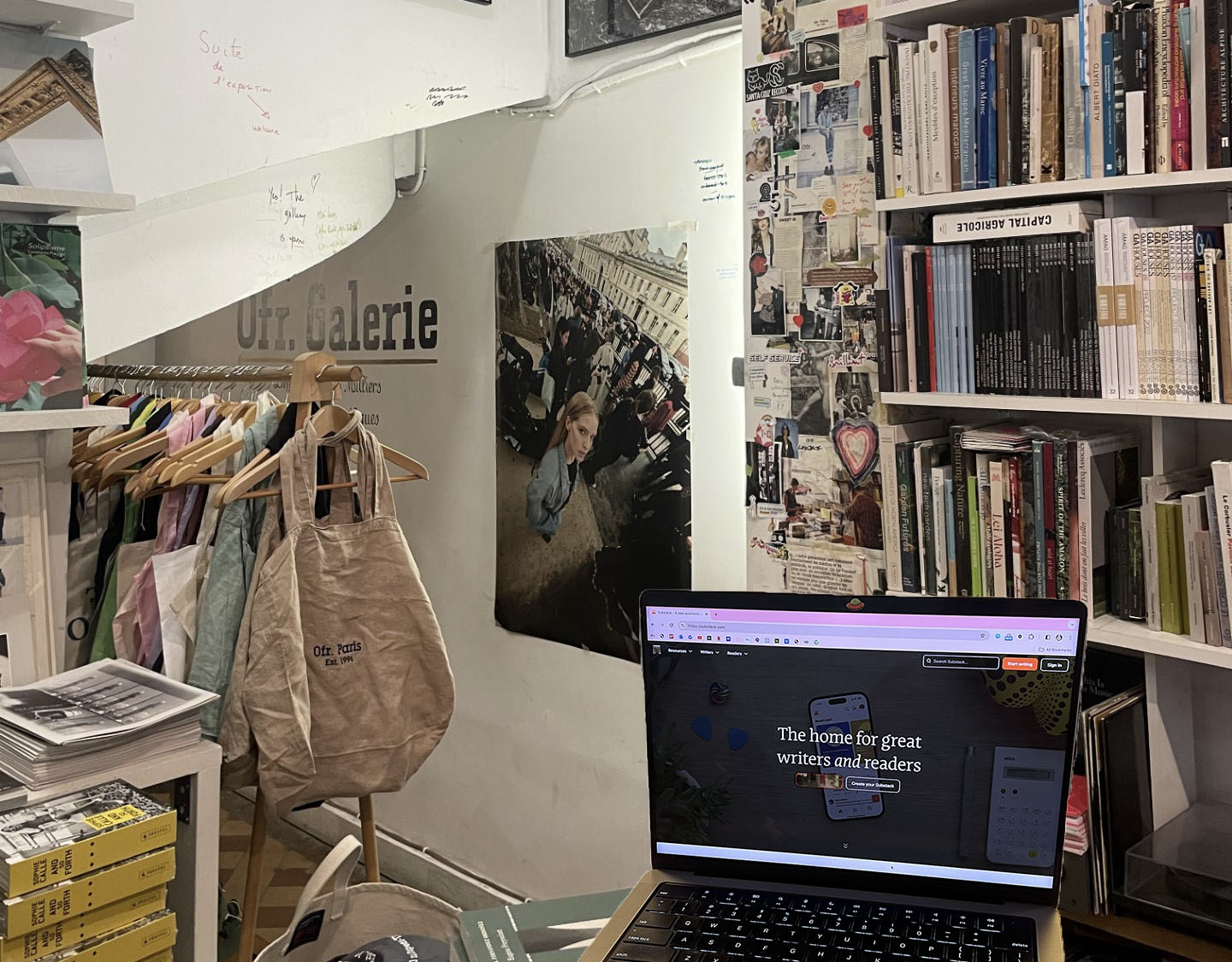The 21st Century Carrie Bradshaw

Nostalgia wins again: blogs and newsletters have returned (if they ever left), neatly packaged in a two-for-one deal on Substack.
Blogging is not as lost an art form as we thought: the slow but steady rise of Substack proves that we still have room for column-style journalism and 2000s blogosphere writing. But what exactly is Substack, and how does it differ from social media platforms like Instagram or Twitter?
Substack is essentially an online newsletter platform where writers start their own subscription-based columns sent directly to their specific subscribers through newsletters. Since there are no ads or algorithmic quibbling, the power is totally in the writer's hands. Substack hosts the prominent likes of political journalist Seymour Hersh, as well as writer and musician Patti Smith. Such writers have migrated to Substack, not only because it allows them to put whatever they want out into the world but also because they can profit off their work through reader subscriptions at €5 per month. In the current journalistic climate characterized by underpaid writers and editors driven by fear of controversy, Substack has become a saving grace.
The true goldmine of this website is not the seasoned journalists who want to break free from the constraints of a publication’s binds. Instead, it lies in the niche of the random twenty-something woman who microdoses on journaling by spilling her thoughts onto a Substack post, reminiscent of a Sex and the City voiceover monologue.
— hannah (@dumbandfunn) May 24, 2023
The writer on Substack can be anyone, anywhere: a European traveler writing love letters, a consummate New Yorker reflecting upon bad habits, an unnamed specter in some vague place. Think of her as Schrödinger's girl; she exists everywhere and nowhere, and first and foremost, she is a writer. She dissects first loves, mothers, perfume branding strategies, French philosophers, and her eerie cryptic dreams. Not only is she a writer, but she is also a vibe curator. Her introspective cultural analyses and self-reflective meditations are broken up with a Spotify link to a Cocteau Twins album, a meme, a photograph of artful vintage clutter on a dresser, a Joan Didion quote, a poem by Louise Glück, a still from a '90s Chloë Sevigny cult classic. The possibilities are endless.
The writing holds the entire piece together, turning the unassuming blog post into a dreamlike experience. The style often veers a little into the realm of lyric poetry. It is pensive without being pitiful, self-aware without being self-deprecatory. It criticizes culture while acknowledging its role in it. It feels a little surreal but is so achingly relatable. It wants you to focus. Sometimes, it sounds like a melancholic Carrie Bradshaw, staring at the ceiling of her New York City apartment ("I couldn't help but wonder...") and sometimes it's satirical and funny. It contains multitudes, but it is always diligent in its words and the message it wants to impress upon the reader.
Altogether, the column-style writing and the audiovisual elements come together to create a blog post toeing the line between authentic and performative; it's as if a diary entry and a Pinterest board had a baby. A pessimist might call it the commodification of malaise through yet another social media platform hiding behind a veil of pseudo-intellectualism. A realist would call it a healthier and much more thoughtful version of Twitter.
The Substack niche is slowly breaking into the mainstream. One of its most well-known creators, Rayne Fisher-Quann, rose to micro-celebrity status through a post titled “standing on the shoulders of complex female characters,” in which she reflects on our generation's neurotic tendency to filter our experiences and shape our identities according to the media we consume to market ourselves. Her cultural criticism and personal essays earned her over 80,000 subscribers on Substack and a publishing deal with Alfred A. Knopf. Although not every Substack blogger earns as prolifically as she does, many have a dedicated readership that supplies them with, if not some income, at least some attention, which is all a writer asks for.
omg she’s so right https://t.co/ESmpf8ks9J pic.twitter.com/Y2PaE1N9q6
— hannah (@dumbandfunn) February 13, 2024
What Substack implies for the online landscape is still being determined. Very few people have the attention span for weekly newsletters. Even fewer want to pay to read someone else’s thoughts when they could do it for free on TikTok, accompanied by a jaunty soundbite. There is deliberate intention in writing or subscribing to a newsletter nonexistent on other social media platforms, where algorithms control your feed.
The rise in popularity of blog-like newsletters implies a shift in perspective: now, more than ever, we are being mindful of the content we consume. We want content that is inspiring and thought-provoking. We want to be entertained and educated at the same time. We want to read something that carries a little bit of emotional depth. We want to read, period. Maybe we are abandoning—or at least taking small breaks from—the instant dopamine rush created by Instagram influencers in favor of creativity that doesn't talk down to its readers but encourages them to understand every sentence and reference. The popularization of this niche proves that there is an audience for this type of writing, which blends the column and the essay, the personal voice and the critical one.
It might be too soon to say that writers and journalists are reclaiming the high status they held in the '90s, but it's no longer a far-fetched prediction either.





